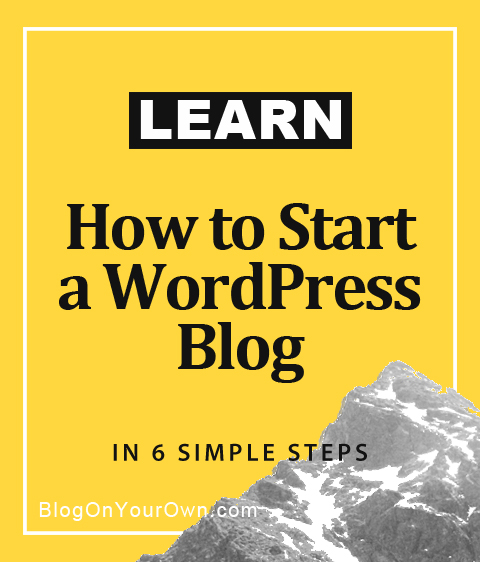This post is all about monetizing your blog. I’m going to provide a practical outline you can follow to get your blog making money.
Blogging is a form of content marketing that integrates other content marketing strategies, like infographics, video clips, SEO, ad placement, and affiliate marketing.
But without traffic your blog is dead. Your blog needs traffic like a fish needs water. So after content, generating traffic is the next important area to focus on.
There are 3 areas all bloggers need to give attention to in order to make money from their blogs. These are:
- Content
- Traffic
- Streams of Revenue
Let’s begin!
Disclosure: Please note that some of the links below are affiliate links and at no additional cost to you, we’ll earn a commission. When you purchase a product or service using one of our affiliate links, the company compensates us, which helps us run this blog and keep our content & themes free of charge to you. Know that we also only recommend products we personally stand behind.

High-Quality Content is Key
What are blog content marketing strategies?
Simply put, a content marketing strategy is a plan to share content across multiple platforms and devices. The plan is to get as many people to read your content as possible. And a blog is one of the best ways to deliver content.
Content marketing strategies are used to boost traffic.
To make money from your blog combine content marketing strategies (like adding videos and infographics) with SEO marketing strategies (like keyword research). You’ll generate traffic to your blog and get better rankings on Google.
Implement further strategies like ad placement, affiliate marketing and an online store. You can go even further and add free resources, online courses, workshops, and gated content. Make sure everything you add is relevant to your target audience and your content. Keep it tight.
You may also like: How To Make Money Online.
Remember:
Blogging is just one form of content marketing, but your blog can also be a platform for multiple streams of revenue.
Why is it relatively easy to monetize your blog?
Today, over 90% of digital marketers use content marketing. But only 20% use integrated content strategies. Blogging can be both a short-form (1 000 words) and a long-form (over 2 500 words) of integrated content marketing. When combined with multiple marketing strategies blogs benefit from both inbound and outbound marketing. This means they make money directly from sales and also indirectly from passive income channels.
Statistics show that over 60% of organic (unpaid) traffic comes from search engines like Yahoo, Google, and Bing. By combining SEO marketing strategies and content marketing strategies you can grow your organic traffic. Organic traffic generates conversions.
If you have exceptional content, utilize basic SEO strategies, and make the effort to promote your personal blog through email and social media marketing, your monetization strategies are sure to generate revenue!
A Broad Outline To Monetizing Your Blog
By combining:
- Content marketing strategies
- SEO marketing strategies
- Email marketing strategies
- Affiliate marketing strategies
It is possible to:
- Promote your blog
- Generate traffic
- Convert traffic to leads and leads to subscribers and customers
- Earn money through inbound and outbound marketing. You can monetize your blog by setting up revenue channels of passive income as well as channels of income derived from direct sales.
Remember:
The blogs that make big profits are blogs that promote their content vigorously.
12 Reasons why your blog can make money.
These stats and insights prove that you can make money with a blog.
- Over 77% of internet users read blogs.
- Small businesses with blogs have 126% more lead growth.
- Businesses with blogs have 434% more search-indexed pages. (Google can take from 4 days to 6 months to crawl a site and grant the domain authority.) A blog increases your chances of being picked up by Google sooner. And Google likes blogs for SEO.
- Content marketing brings in conversion rates that are 6 times higher than other methods.
- Blogs are 4 times more likely to get found through organic searches.
- Blogs have 3 times the amount of lead generation compared to ads.
- 70% of high-income bloggers stress the importance of promoting their content. Only 14% of low-income bloggers realize the importance of promoting content.
- It’s interesting to know that B2B (Business to Business) content marketing and B2C (Business to Customer) content marketing yield different results. So make sure you know your target market.
- Blogging is a long-term strategy.
- Blogging is still seen as short-form content even though most successful blog posts are around 2 500 words long. (1 000 words is considered short-form.)
- Your blog can introduce gated content. Gated content is considered long-form. White papers, videos, podcasts, ebooks, online courses can all be termed gated content. Gated content requests that the user fill out a form to get access. This is usually then sent to your email. This is one way to convert traffic.
- Blogging creates brand awareness, builds trust, and cements your online presence and authority.
What are the advantages of combining marketing strategies?
It’s all about getting the content out there. Once you have traffic you will see revenue come in from your various streams of income. Let’s look at the 4 main marketing strategies and their relevance to blogging.
- Content marketing – good content gets traffic. And a busy blog generates income.
- SEO marketing – helps the search engines to find your content, boosting traffic.
- Email marketing – use your email list to promote each new blog post and get people to share your content.
- Social Media marketing – sharing is caring. Over 80% of users trust the recommendations of micro-influencers over brand advertising.
Content marketing strategies (blogs) achieve the following:
- They drive traffic. Successful content marketing can increase traffic by 8 times. It costs 60% less than outbound marketing. And generates 3 times as many leads.
- Sites with blogs using effective content marketing strategies have conversion rates 60 % higher than those sites not using blogs.
- It acquires and retains customers even though content marketing does not use direct sales.
- It supplies insights by measuring traffic and the engagement that brings conversions. Tracking these statistics reveal which channels are generating income projections.
- Establishes the blog as a reliable source of information.
- Engages organically with consumers.
Let’s look at a few things you can do to help your blog generate income and traffic.
7 Content Marketing Strategies (that you can add to your blog to make it profitable and boost traffic)
1. The Blog Itself
A blog delivers informative, helpful content, builds relationships with users, leads, and clients, establishes your online presence, and allows you to become an authority within your niche.
Start a blog
You may also like
How To Write an About Me Page (with Examples)
Producing quality content is a strategy on its own. And the blog is the star of the show. The reason why the blog is such a powerful content marketing strategy is because it can combine other excellent marketing strategies like gated content and SEO. Did you know that business sites with blogs have 97% more inbound links than sites without blogs? This is SEO gold.
2. Gated Content
Your blog is the gateway to gated content. In exchange for a name and an e-mail address, users get access to long-form content that is even more detailed and helpful to readers. Once a user subscribes to get the gated content, they usually end up allowing you to send them regular emails and newsletters. Essentially, converting traffic to leads.
Examples of gated content: Also known as long-form content.
- Whitepapers
- Ebooks
- Templates/Checklists/Worksheets
- Tutorials
- Workbooks
- Online courses
3. Ebooks
You can use ebooks to boost traffic and generate income. Create free ebooks that people can access by leaving their name and email address. This means traffic gets converted to leads. You can sell ebooks as part of your affiliate marketing strategy. You can also create ebooks as an extra form of content and sell ebooks through your blog. Food bloggers often do this. Once you have an ebook to sell you can earn passively without doing any more work beyond the initial e-book.
4. Infographics
Infographics present complex data in a simple, image-based format. They are perfect for combining visual elements with statistical data. Harris Eisenberg, Executive Vice President of ThermopylaeSciences and Technology, says this, “The human brain processes images 60 000 times faster than it does text. And 90% of transmitted information to the brain is visual.”
5. Video
Like infographics, video content helps boost traffic. Whether you embed video links into your blog, create a YouTube channel to complement your blog, or add live streaming on social media platforms, a video brings a high ROI (return on investment). Many popular bloggers use analytics to find their most popular posts. They then create video content from those blog posts.
Repurpose evergreen content, either with best blog posts or videos. Or both.
6. Online courses
It takes a lot of hard work to create an online course. But if you are an expert in your field, it is well worth it to sell your courses through your blog. If you want to learn how to create online courses check out Learning Revolution’s toolbox. Online courses bring in a good income for bloggers.
There are many sites offering software to create online courses. Some are free, some have free trial periods, and others can cost quite a lot, but when you consider how much revenue you can generate through these online courses, it’s worth it.
- iSpring Suite
- Articulate Studio
- Thinkific
- Canva
- Adobe Presenter
You could also become an affiliate and sell other people’s courses
through your blog.
7. Workshops and webinars
Live streaming is getting more popular, and it’s so easy to sign up for a webinar or workshop. But not so easy putting them together. Often these events are advertised well in advance and run for a limited period (because they are live). If the workshop or webinar is well received, you can be guaranteed that participants will either sign up for a course or purchase the products that were promoted.
This is not the best option for bloggers who are beginning their journey into the world of blogging. But it does have high engagement, so it’s definitely a future option if you want to take your blog to the next level.
Organic Traffic Must Be Optimized
A blog without traffic is like a day without sunshine!
Traffic refers to all the people, readers, users, and visitors that land on your page. Your aim is to provide good content to keep them there. And keep them coming back.
But how do you get your target audience to find you? This is where SEO comes into play. Unlike days gone by Google has finally come to appreciate that people are after substance. And today content reigns supreme!
How can SEO help boost my blog’s revenue? 6 Tried and Tested SEO Tactics.
You may also like
Blog Niche Ideas: How To Choose The Most Profitable Blog Niche
SEO strategies are mind-boggling for most of us. But without SEO your valuable content will have no value. Because no one can find it! Here are 6 SEO hacks you should use to help your blog shine.
1. Keyword research
Invest in good analytics to track your traffic, check out competitor sites, and understand what people are searching for. Keyword planning is important so spend a bit of time on it.
Keyword/SEO research tools:
- Moz.com
- Google trends
- Ahrefs
- SEMrush
- Serpstat
- Yoast
2. Place keywords strategically
Make sure your keywords appear in the:
- Title
- Heading and subheadings
- Intro paragraph
- Concluding paragraph
- Anchor text – which means adding internal links
- Title tags and meta descriptions
3. Optimize images
Make sure your pictures are optimized for all devices, scale them, use the right format, and file name.
4. Use backlinks
To reference sources and other sites that add value to your blog. This is the online way of spreading goodwill amongst your fellow bloggers. It’s good for SEO and it helps to grow our online community.
5. Get subscribers
The more people who subscribe to receive emails, the more chance of your blog getting shared. The more places your blog appears the better your chances are of being picked up by search engines.
6. Align email marketing campaigns with SEO strategies
Email marketing done properly is very effective for driving traffic, generating leads, and getting subscribers to share your content via social media.Here is a list of recommended email marketing software. Use these tools to grow your email subscriptions:
- ConvertKit
- SumoMe plugin
- List Builder
- OptinMonster
- Lead pages
7. Promote through social media platforms.
The power of influencers must not be underestimated. Niche bloggers will have the most success with nano-influencers. They get 4.5% engagement whereas mega-influencers only reach 1%. Facebook, WhatsApp, Pinterest, Instagram, and Twitter are the most popular sharing platforms. Take note of TikTok too. Gen Z is the next demographic marketers should be looking at to stay ahead of future trends.
Create Multiple Streams Of Revenue
And now we come to the part you’ve all been waiting for. Your blog is filled with content to die for, the traffic jams are so sweet you could eat them! And your mailing list continues to grow daily. Finally, all your hard work is starting to pay off. So what are your options when it comes to cashing in on all the graft you have put in? I’ve already mentioned a few of these revenue models, but let’s go through this list together one last time. And we’ll also talk about affiliate marketing in more detail.
Let’s look now at how you can introduce passive streams of income. But don’t be fooled by the word “passive.” You have been anything but passive to get to this point.
Most Popular Revenue Streams For Monetizing Blogs
Sell Membership
As the digital marketplace keeps evolving so do the ways of making money from blogs. Adding a membership fee to your blog has the following benefits:
- You get recurring income each month. If you have 300 members all paying $20 per month that equates to $6 000 per month.
- You create content in the form of tutorials, online courses, webinars, checklists and templates for members to download. Often this content is evergreen and repurposed
- Adding extras like a membership community forum or a live chat option is a good way to keep your site interactive.
- Members receive newsletters, specials, promotions, and discounts that you can offer through affiliates or sponsorships.
Here is a list of software platforms offering membership sites:
- MemberPress – for WordPress
- Memberful
- Membergate
- Wild Apricot
- Wishlist Member – works well with WordPress
Sell Advertising
It all started with advertising but my how things have changed! Most bloggers today are steering clear of ad placements and are opting for clean, uncluttered blogs. Visually and speed-wise, this makes for a better user experience.
And also when you work out how much traffic is actually needed, and factor in the reality that almost nobody actually clicks on these ads, it makes sense to do away with the “clickbait.” If you want proper customers you need to be able to offer legitimate content and products of value.
This doesn’t mean ads are dead, far from it! It’s just that they are being packaged differently. If you cut out the middleman and sell space to advertisers that compliment your blog you retain more control over what appears on your blog.
And this type of direct advertising is more profitable to bloggers than using ad networks.
So all the earlier forms of advertising like CPC (cost per click), CPM (cost per mille), and PPC (price per click) are outdated. Instead, we see more CPA (cost per action) advertising. CPA means you get paid a commission when a sale is made using your link. It’s how affiliate marketing is structured.
If you insist on using ad networks, try these:
- Google AdSense
- Chitika
- BuySellAds
- PopAds
- Infolinks
Become an Affiliate Marketer
Related Posts
Disclosure: Please note that when you purchase hosting using our Bluehost or Kinsta affiliate links below, they compensate us, which helps us make our blog & themes free of charge to you. Know that we recommend only products, tools or services that we have tested.
Thank goodness for affiliate marketing. It is a transparent form of advertising and compliments content marketing beyond compare. It is also far more profitable than other types of advertising. How it works is simple. You promote products through your content and product reviews. Your affiliate links allow people to purchase through your site and you get a commission from each sale.
There are various affiliate programs you can join. You can also deal directly with companies that have their own affiliate programs. The most obvious affiliate program is Amazon. Amazon dominates the global market and is suited to a wide range of blogging niches. Whether you have a gardening blog, a mommy blog, a health and fitness blog, or a lifestyle blog, Amazon will have something for everyone.
And of course, another blogging niche that suits affiliate marketing is this one I blog in. Hosting platforms like Kinsta and Bluehost allow us to offer our users discounted offers that are too good to miss out on. Every blog and website and podcast need a home, so it is a product that is in great demand. Competition creates plenty of space to find amazing deals.
Being an affiliate with a travel blog could be quite lucrative. Products like camping gear, photographic equipment, and holiday packages earn far more commission than trying to sell boxes of organic tea!
Other profitable niches for affiliate marketing are:
- Golf
- Weight-loss
- Real estate
- Home decor
- Software
- Online courses
Jeff Ramlee, from Lead Dyno, reckons these are the 11 most profitable niches for affiliate marketing:
- Beauty
- Health & Wellness
- Outdoor Survival
- Pets
- Hobbies
- Fashion
- Loans
- Investments
- Gadgets
- Self-improvement
- Fitness
- Tech
Some very mainstream affiliate programs are:
- Amazon
- eBay Partner network
- Commission Junction – now called CJ Affiliate
- ShareASale
- Walmart
There are some major drawbacks with some affiliate programs so scout about until you are certain it will be worth your while to partner up. Amazon, for instance, has slashed its commission rates in many categories. For example, you only earn 1% off sales in the Health and Personal Care department. It was 4.5%. Furniture, Pets, and Gardening was slashed from 8% to 3%.
Another thing to consider is “cookie duration.” Many affiliate programs give you a 30-day cookie duration. This means if your link is clicked within 30 days, you can still earn a commission. Amazon’s cookie duration is 24 hours!
If you can form direct affiliations with brands and companies you will make more commission. When you use affiliate networks they take a cut of all your earnings. This makes it difficult to make good returns.
Here is a list of niche affiliate programs to consider, especially if you are still deciding on a niche or want to think outside the box.
- Earn commission selling wine and more wine!
- Sell cruises for 3% commission with CruiseDirect
- Become an affiliate for horse related products
Affiliate marketing is an income revenue that pairs really well with blogging.
Open an online store
Have you heard of drop shipping? If not, let me briefly explain. Drop shipping is a revenue model that allows you to sell products without the hassle of shipping. You don’t even see the products you are selling. There are pros and cons to this type of online selling.
How it works
This is how dropshipping works:
- You sign up with a drop shipping company like Sunshine Wholesale Merchandise.
- Once you become a member you have access to over 10 000 products.
- You can sell these items on Amazon, eBay or your own online store.
- Your blog can be filled with content relevant to the products you choose to promote.
- Shopify is the most reliable and trustworthy platform for dropshipping because they give you a 99.99% guarantee that your payments and privacy will be secured against online fraud.
- WordPress.org blogs can be integrated with Shopify.
You may also like: 30 Money Blogs. The Best Personal Finance Blogs For 2020.
Keep The Change!
I hope you are feeling inspired to take your blog to the next level. And make money from your blog. As you can see monetizing a blog is absolutely doable. But there are no shortcuts. The beauty of this process, of growing your blog into a business, is that you get out what you put in. You decide how to work, where to work and what to work on. You create your own destiny. Choose to stay a small but profitable blog or expand out into a burgeoning blog empire that will give you financial freedom and independence.
There is no limit to what you can achieve. And the online business world provides you with all the advice, training and tools you need. Seize the day!
6 attributes of a successful blog
- Generates traffic, mainly through organic search engines.
- Contains content that entices a user to stay longer and explore the site.
- Gets readers subscribing to a mailing list.
- Gets customers to make purchases through your affiliate links.
- Turns visitors into subscribers to become regular or return customers.
- Makes money through multiple streams of income, both passive and active.


